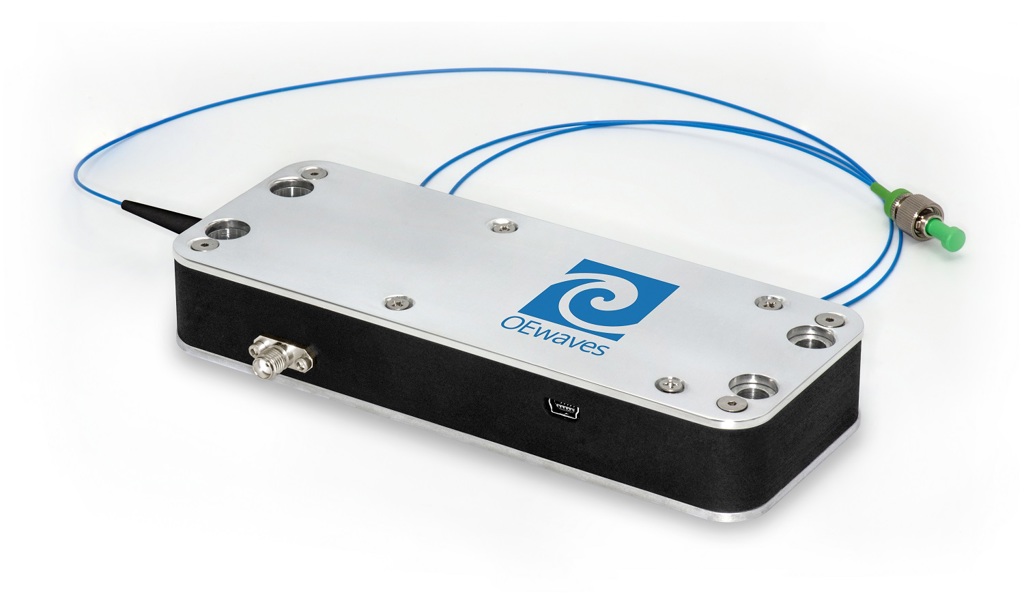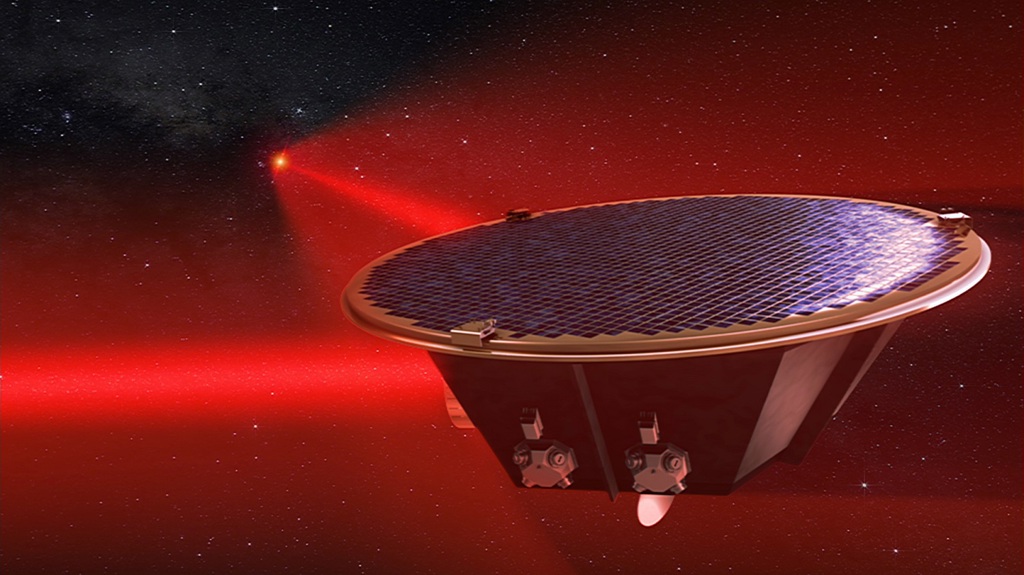About
18 September 2019
Laser Prototype for Space-Based Gravitational Wave Detector
Key component for LISA mission to detect gravitational waves from space to be presented at OSA Laser Congress
WASHINGTON — Researchers have announced a prototype for a laser at the heart of the first space-based gravitational wave observatory, known as the Laser Interferometer Space Antenna (LISA) mission. The team’s new laser nearly meets the stringent requirements outlined for LISA’s instrumentation, representing an important step toward bringing the ambitious observatory program to fruition.
“What a motivating challenge it was to realize a laser system with state-of-the-art performances, capable of meeting the stringent reliability requirements of a space mission,” said Steve Lecomte with the Swiss research firm CSEM, who will present details of the prototype’s performance at The Optical Society’s (OSA) 2019 Laser Congress, held 29 September to 3 October in Vienna, Austria.

Caption: Prototype laser for the LISA gravitational wave space mission.
Credit: CSEM
LISA will complement ground-based gravitational-wave detectors, like the U.S. National Science Foundation (NSF)-funded Laser Interferometer Gravitational-wave Observatory (LIGO), by deploying a gravitational wave detection system in space. In 2016, NSF announced that LIGO had made the first-ever direct observations of gravitational waves, ripples in the fabric of space and time that were predicted by Albert Einstein 100 years earlier in his general theory of relativity.
Both the LIGO and LISA observatories rely on lasers to detect gravitational waves. In addition to the precision and reliability required for any gravitational wave detector, the laser onboard the LISA mission must meet additional criteria to ensure it is suitable for long-term use in space.
LISA is led by the European Space Agency (ESA) in collaboration with the U.S. National Aeronautics and Space Administration (NASA).
Exacting requirements for precise measurements
LISA, scheduled to launch in the early 2030s, will consist of three spacecraft arranged in a triangle millions of kilometers across. The spacecraft will relay laser beams back and forth and combine their signals to find evidence of gravitational waves.
The multitude of components within the LISA system must function perfectly individually and together in order for the mission to succeed. For its part, the laser must meet exacting standards in terms of power output, wavelength, noise, stability, purity and other parameters.
The researchers developed a laser that meets nearly all of the requirements outlined by ESA and NASA. All of the laser system’s optical and electronic components are either compatible with the space environment or based on technologies for which space-grade components are available.

Caption: Artist impression of the ESA/NASA LISA space-based gravitational-wave observatory. Recent prototype tests of its laser indicate that it is one step closer to operation.
Credit: ESA/NASA
The system starts with a seed laser, the first packaged self-injection locked laser to be realized at the mission-specified wavelength of 1064 nanometer developed by OEwaves. The light emitted by the seed laser is injected into a core-pumped Yb-doped fiber amplifier (YDFA), which boosts the average power from 12 to 46 milliwatts. A fraction of the amplified light is then directed to an optical reference cavity, which improves the spectral purity and stability of the laser by orders of magnitude.
The main part of the light then crosses a phase-modulator, which adds features that will allow the mission to compare signals across the three spacecraft through a process known as interferometry. Finally, a second core-pumped YDFA and a double-clad large mode area YDFA amplify the signal to almost 3 watts. Additional components help stabilize the power output.
Confirming performance
The team created a special test station to assess their prototype laser system. They used a cavity-stabilized ultra-narrow 1560 nanometer laser, an optical frequency comb, an active H-maser and temperature-stabilized low-drift photodetectors as references for measuring the stability of the system’s frequency and amplitude.
The tests demonstrated compliance with LISA specifications over the full frequency range, with exceptions below 1 megahertz and above 5 megahertz, as well as excellent compliance with regard to noise. Where the tests show minor deviations from the specifications, the researchers have identified likely causes and proposed solutions to fine-tune the system. These solutions include some technical improvements of the seed laser, like adding a drop port to the resonator to reduce high-frequency noise.
“While a launch date shortly after 2030 might appear far away, there is still substantial technological development to be performed. The team is ready to further contribute to this exciting endeavor,” Lecomte said.
About CSEM
CSEM, founded in 1984, is a Swiss research and development center (public-private partnership) specializing in microtechnology, nanotechnology, microelectronics, system engineering, photovoltaics and communication technologies. Around 450 highly qualified specialists from various scientific and technical disciplines work for CSEM in Neuchâtel, Zurich, Muttenz, Alpnach, and Landquart.
Further information is available at www.csem.ch
OEwaves, Inc., is a leader in innovative photonics products and solutions in support of communication, sensor, RADAR/LIDAR, stable clocking, and test and measurement systems for commercial, research and space applications. OEwaves pioneered the application of photonics for generating spectrally pure optical and RF sources based on its proprietary Whispering Gallery Mode (WGM) Optical Microresonator technology. Devices implementing OEwaves’ WGM Microresonators offer extremely high optical quality factors ~ 100 billion and are made from optically transparent materials enabling operation from the near-UV to mid-IR – 370-4500nm. OEwaves also offers flight-qualified, rugged-packaging that is insensitive to vibration, shock and environmental effects while maintaining exceptional phase noise performance of < -160 dBc/Hz and ultra-narrow linewidth of < 1 Hz. Devices utilizing the OEwaves’ technologies achieve best-in-class performance with exceptionally small size, weight and power (SWaP). OEwaves was founded in 2000 and has offices in Pasadena, California, and Dublin, Ireland. For more information, please visit www.oewaves.com
About The Optical Society
The Optical Society (OSA) is dedicated to promoting the generation, application, archiving, and dissemination of knowledge in optics and photonics worldwide. Founded in 1916, it is the leading organization for scientists, engineers, business professionals, students, and others interested in the science of light. OSA’s renowned publications, meetings, online resources, and in-person activities fuel discoveries, shape real-life applications and accelerate scientific, technical, and educational achievement.
Media Contact
